I am currently designing a capacitive discharge spot welder and am running into the issue of switching.
I plan to use a few super capacitors in series to discharge around 1000A in a very short period of time (most likely less than 100 milliseconds). I plan on charging the capacitors to around 10V.
So I essentially need a device capable of delivering a short pulse of very high current. I do not want to dump the entire charge of the capacitor in one go, so SCRs are not a solution to my issue. I have been looking at MOSFETs, and this one catches my eye: http://www.mouser.com/ds/2/205/DS100728A(IXTN660N04T4)-1022876.pdf
However, I am unsure of how exactly to interpret the datasheet. Is the MOSFET capable of driving 1800A as its pulsed drain current states? Or is it limited to 660A (or even 220A), forcing me to wire a few of these in parallel? Or will one of these MOSFETS be fine? According to my preliminary calculations, a lone MOSFET connected directly to the capacitors without any other resistance would be dissipating around 900W, which seems to be within the range of the data sheet.
So essentially, am I interpreting the data sheet correctly, or do I need to order a few of these MOSFETs (and if so, how many would you guess?)
